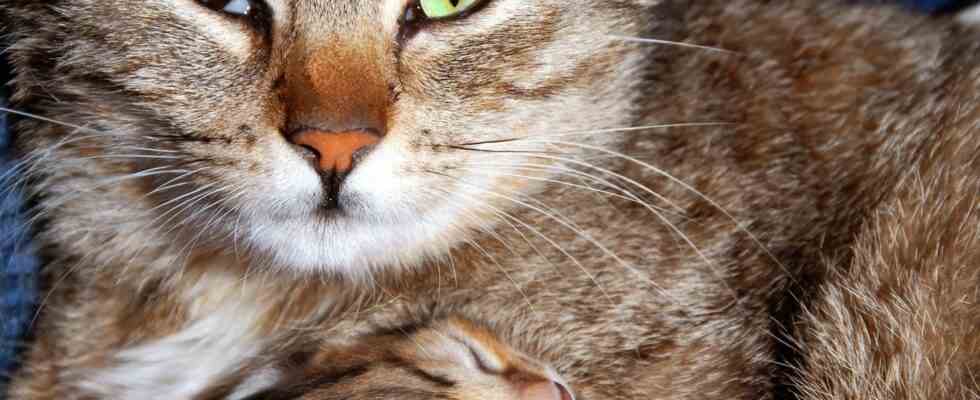“milk kick”
Three reasons why cats take great care in trampling on their sleeping place
If you look closely, you can see that this cat has a kitten. The origin of the behavior called “milk kicking” lies in the animals’ infancy.
With both paws and sometimes also with the claws: Many cats work the ground extensively before they sleep. The behavior has three main causes.
When cats go to sleep, they often perform a ritual: they tread on the spot and flatten the ground alternately with their left and right front paw. Sometimes they turn around their own axis. Or they extend their claws rhythmically. Purr – that’s nice! According to cats, the preparation of the sleeping place obviously requires great care.
Not all cats and hangovers tread evenly before lying down, but a great many do. It doesn’t matter whether they are young or old, whether they are cats or tomcats, neutered or not.
Some cats perform this ritual for several minutes
Some animals finish this little dance after just a few seconds. For others, it can take “up to ten minutes”, as a listener describes in a podcast broadcast by “SWR-Wissen”. His neutered cat always shows this behavior when he makes himself comfortable on a soft surface – for example on a blanket or a sofa cushion.
“Treading” or “kneading”, as this behavior is also called, has not been completely scientifically researched. But in general three explanations are given for this.
The first and most important is the cat’s childhood: Kittens that are still being suckled massage their mother’s belly with their paws to stimulate her milk flow. The behavior, called “milk kicking,” is innate, according to biologists.
“Milchtret” triggers well-being in adult cats
It is believed that cats continue this behavior into adulthood because the ritual induces well-being in them. When the animals “kick” they feel safe or even calm themselves down, according to the common opinion. A soft blanket is a bit reminiscent of the mother cat’s fluffy tummy, according to articles on this behavior. Therefore, the “milk step” can be observed above all when the cat is sitting on something soft.
Reason number two is said to lie with the wild ancestors of our domestic cats, the North African wildcats. These wild cats will paw their roost to make it more comfortable. After all, there has to be a certain level of comfort out in the wild.
And third, cats have scent glands on their paws. So they use their kneading movements to mark the place where they want to lie down as their territory.
Cat owners should be alert if the animals “kick” extremely often and for a long time. It can mean that the female cat is in heat, i.e. ready to mate. But it can also be a sign of an illness and would then be a reason for a visit to a veterinary practice.
Sources: “SWR knowledge“, “Rascal Pet Channel“, “Uelzen magazine“


